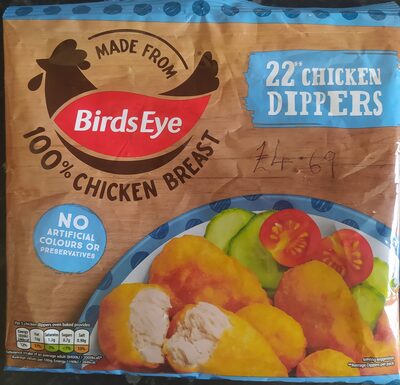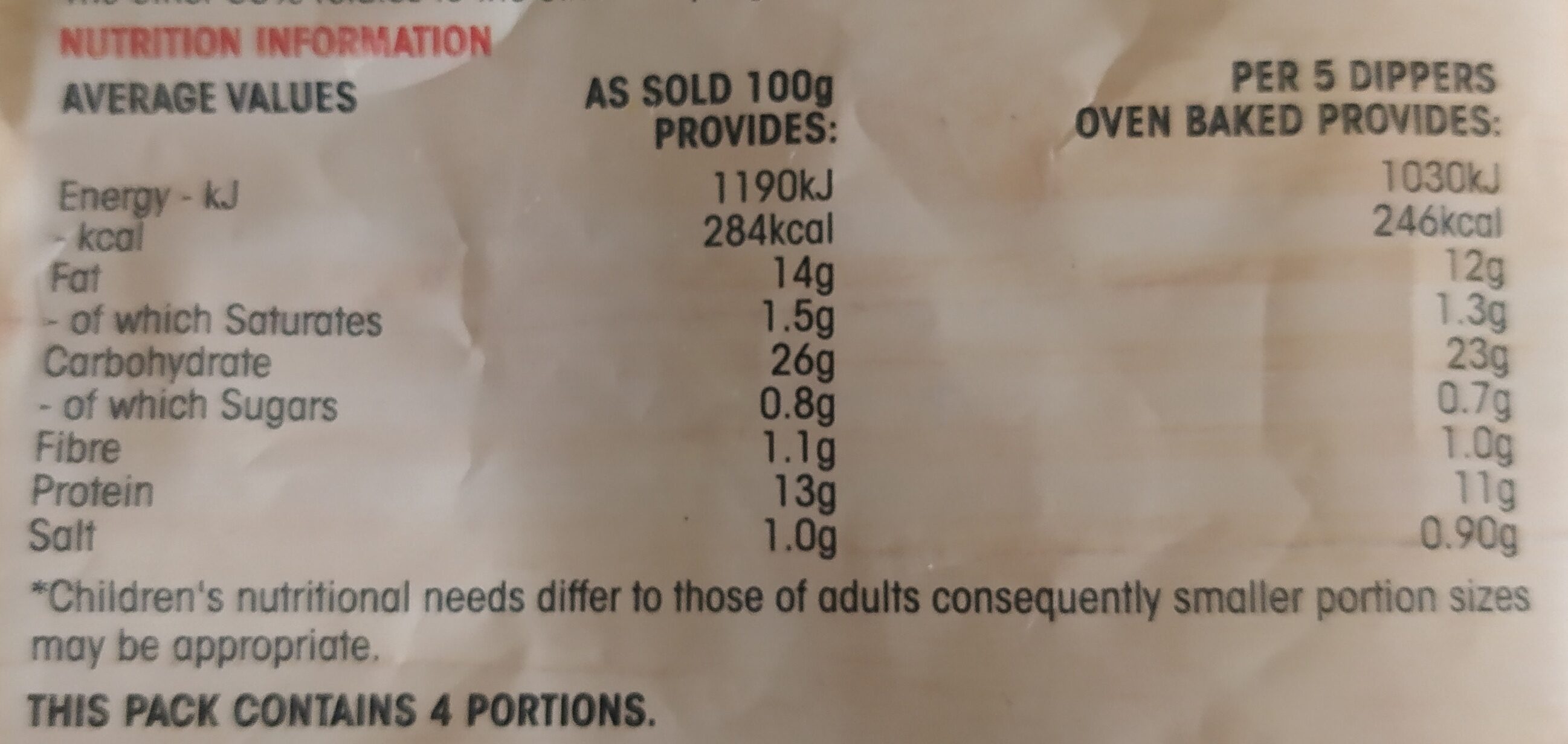Chicken Dippers - Birds Eye - 403g
This product page is not complete. You can help to complete it by editing it and adding more data from the photos we have, or by taking more photos using the app for Android or iPhone/iPad. Thank you!
×
Barcode: 5000116123902 (EAN / EAN-13)
Common name: Dippers formed from chopped marinated chicken breast meat, coated in a light batter, lightly fried
Quantity: 403g
Brands: Birds Eye
Categories: Meats and their products, Meat preparations, Meats, Chicken and its products, Poultries, Chicken preparations, Breaded products, Chickens, Poultry nuggets, Breaded chicken, Chicken nuggets
Labels, certifications, awards: No artificial preservatives, No artificial colors, No artificial colours and preservatives
Origin of ingredients: United Kingdom
Traceability code: GB LO 037
Link to the product page on the official site of the producer: https://www.birdseye.co.uk/range/frozen-...
Stores: Sainsbury's
Countries where sold: France, United Kingdom
Matching with your preferences
Report a problem
Data sources
Product added on by kiliweb
Last edit of product page on by doublah.
Product page also edited by alia, date-limite-app, ecoscore-impact-estimator, openfoodfacts-contributors, yuka.YjU1ZURxUVFtc0Fwd3ZZbTFCanM2TkZuNWFXSVptTzJCZEU2SUE9PQ.












